
Realizing Our Vision:
Proposals for School Year 25-26
May 22, 2024
1
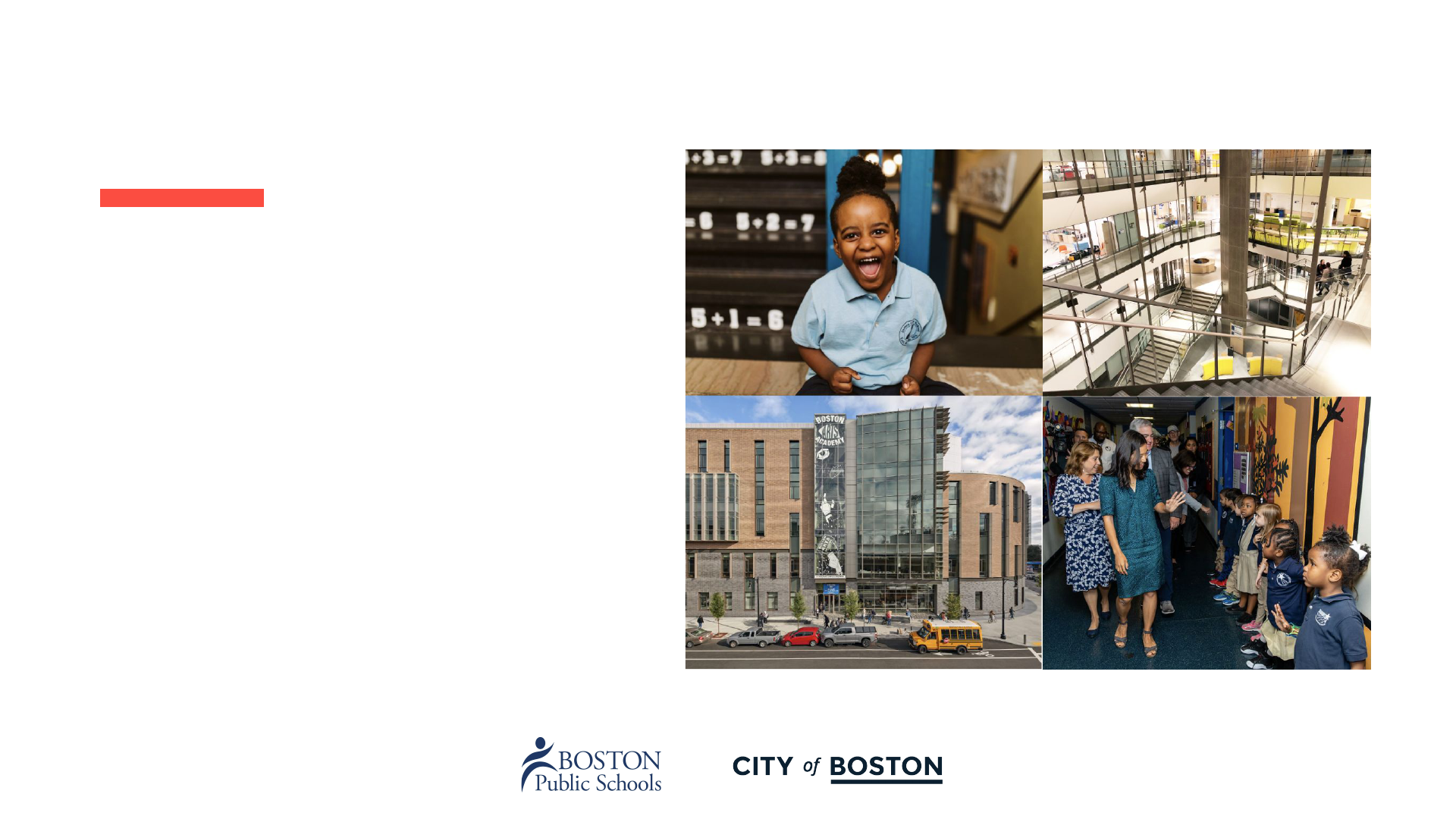
VISION
Collectively, we want students
to learn in schools that provide
rigorous and culturally
affirming learning experiences,
provide access to wellness and
enrichment, contain a
supportive network of caring
adults, and have the physical
spaces to support all aspects of
a student’s education – the four
components of the BPS
High-Quality Student
Experience (HQSE).
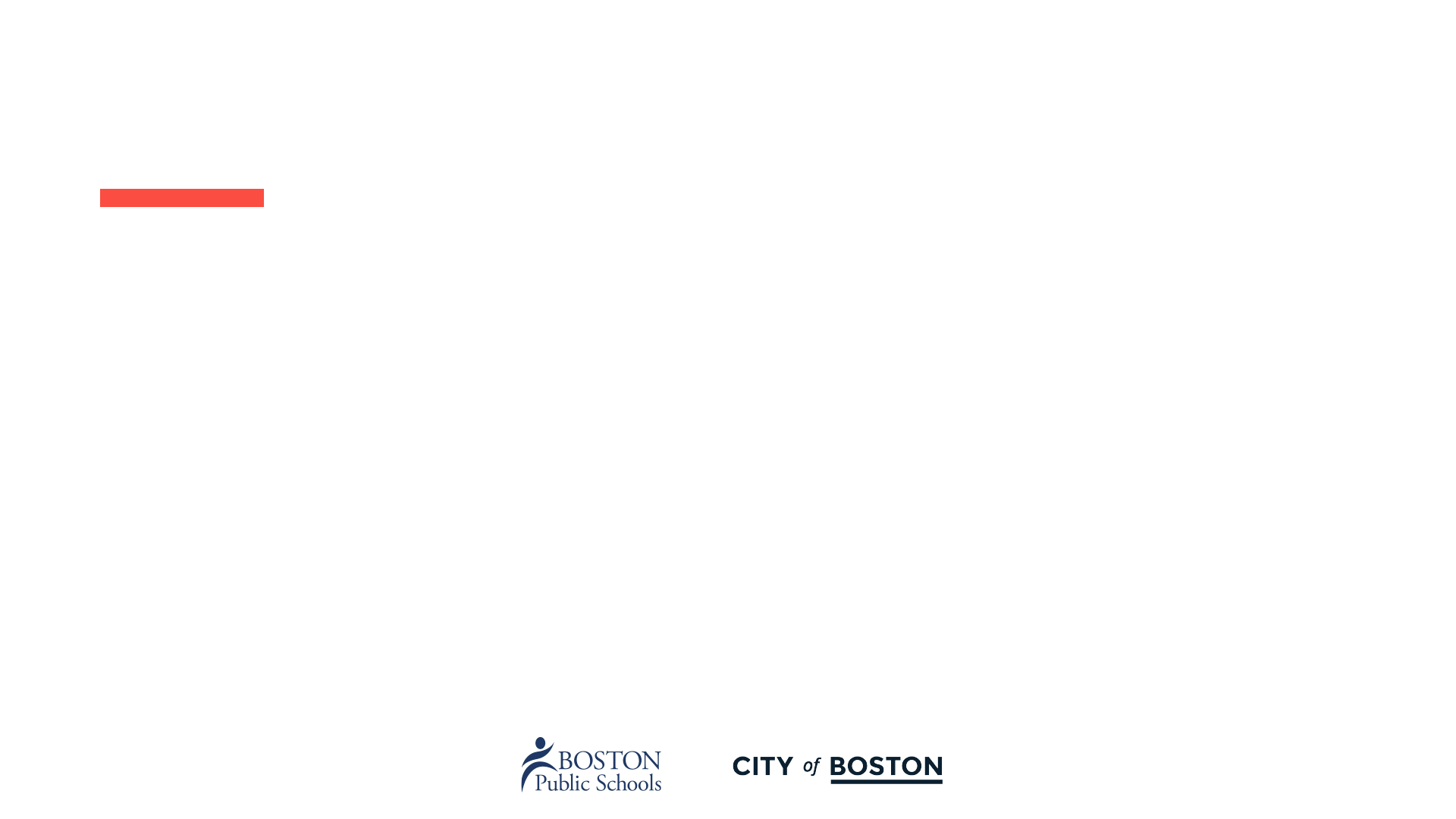
Realizing our vision
• May 8, 2024: Laying the Foundation: Historical Context
• May 22, 2024: Realizing our Vision: Proposals for SY 2025-26
• June 17, 2024: School Committee Vote on Proposals
• Summer & Fall 2024: Planning transitions with impacted school
communities
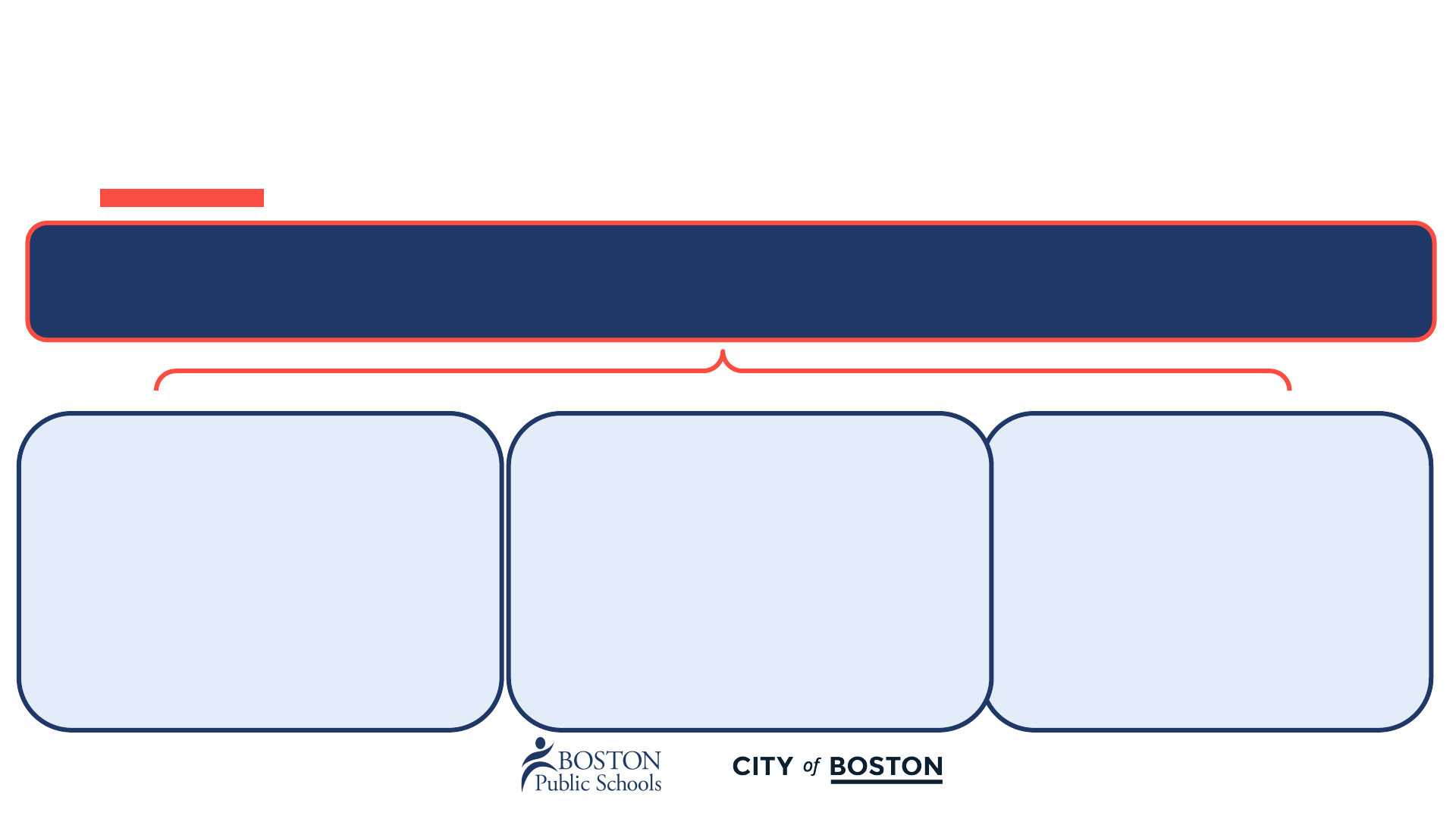
● Inclusive Education & Equitable Literacy
● Expanding Bilingual Education, SLIFE &
Newcomer Programming
● Strengthening the Secondary School
Ecosystem
● Expanding Community Hub Schools
Well-Rounded BPS Ecosystem
Increase number of seats that support the High-Quality Student Experience
for every student in the district.
● New Builds and Renovations
● Closures, Consolidations and Mergers
● Better Utilizing Existing School
Buildings to Deliver HQSE
Aligning our work to our vision
● Strategic expansion of high quality seats
● Minimize student transitions and provide
strong school choices
● Create New Programming for
Multilingual Learners and Students with
Disabilities, Ages 19-22
● Rethinking Assignment and Special
Education Policies
Investing in Our Facilities
Create and Improve Academic
& Enrichment Programs
Structural Changes
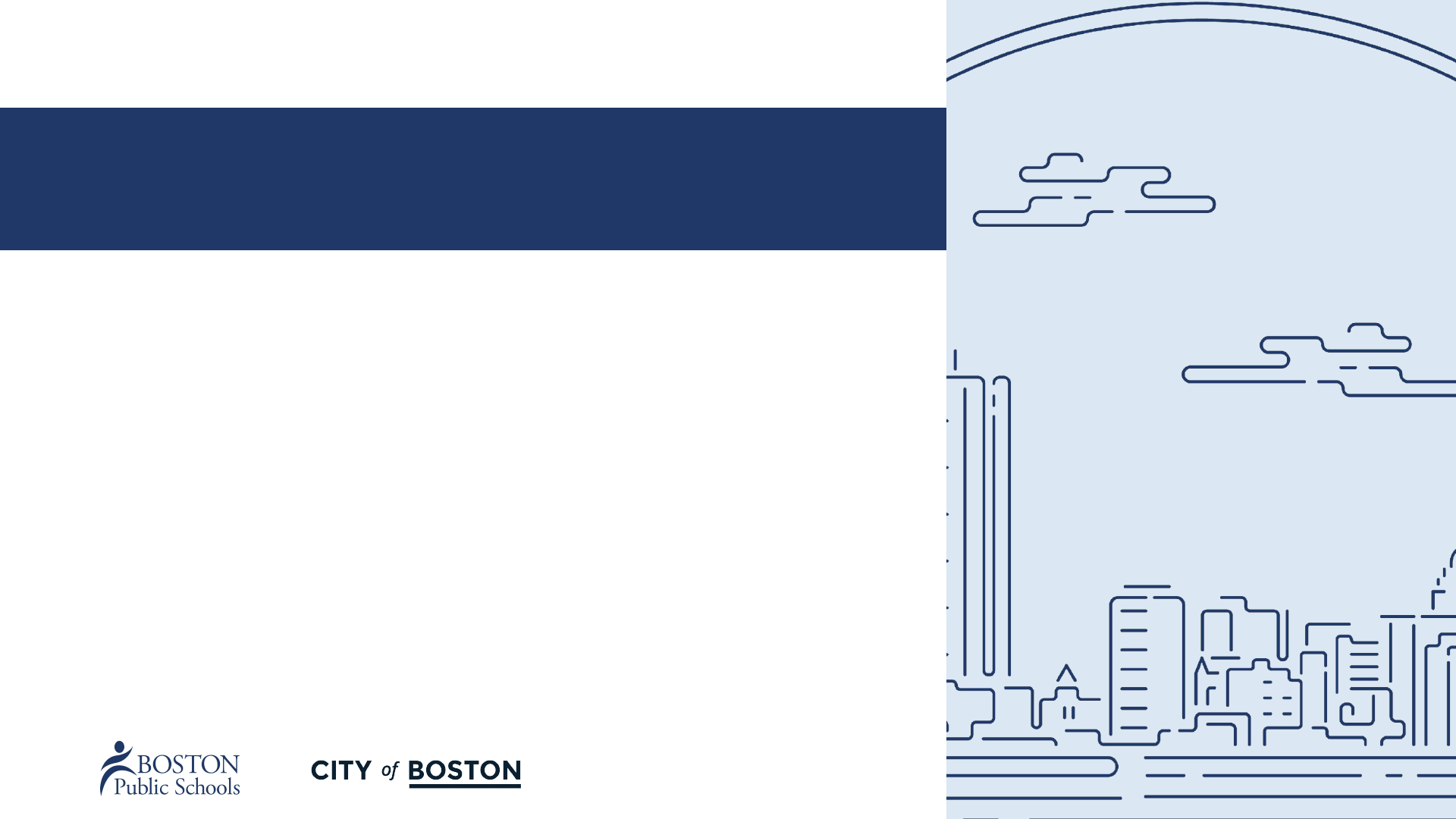
Create and Improve Academic
& Enrichment Programs
Levers for Delivering on our Academic Vision:
• Inclusive Education and Equitable Literacy
• Expanding Community Hub Schools
• Expanding Bilingual Education, SLIFE &
Newcomer Programming
• Strengthening the Secondary School
Ecosystem
5

Inclusive Education & Equitable Literacy
6
Universal
Expectations and
Progress Monitoring
Quarterly Reviews
Inclusive
Education
High Quality
Instructional Materials
and Rigorous
Academic Pathways
implemented well for
all students
Quality School Plans
with customized and
aligned goals to the
Universal Expectations
Responsive and
Differentiated
Instructional
Practices to support
every student

Expanding Community Hub Schools
7
In SY24-25, 6 additional schools will become
hub school sites:
● Recently merged school communities
○ Shaw-Taylor
○ Philbrick-Sumner, and
○ Ruth Batson Academy (formerly
BCLA-McCormack)
● Hennigan (after SY24-25)
A process to identify an additional two schools is
currently underway.
Our Community Hub Schools are guided by six key practices - powerful student and family
engagement; collaborative leadership and shared power and voice; expanded and enriched
learning and opportunities; rigorous, community-connected classroom instruction; culture of
belonging, safety, and care; and integrated systems of support.
In SY23-24, there are 14 Community Hub Schools supported by
Community Hub School Coordinators
● King Elementary
● Margarita Muñiz Academy
● Mario Umana Academy
● Mather Elementary
● Mattahunt Elementary School
● Sarah Greenwood K-8 School
● Trotter K-8 School
● Burke High School
● Frederick Pilot Middle School
● Gardner Pilot Academy
● Haynes Early Education Center
● Hernandez K-8
● Horace Mann School for the
Deaf Hard of Hearing
● Hurley K-8 School
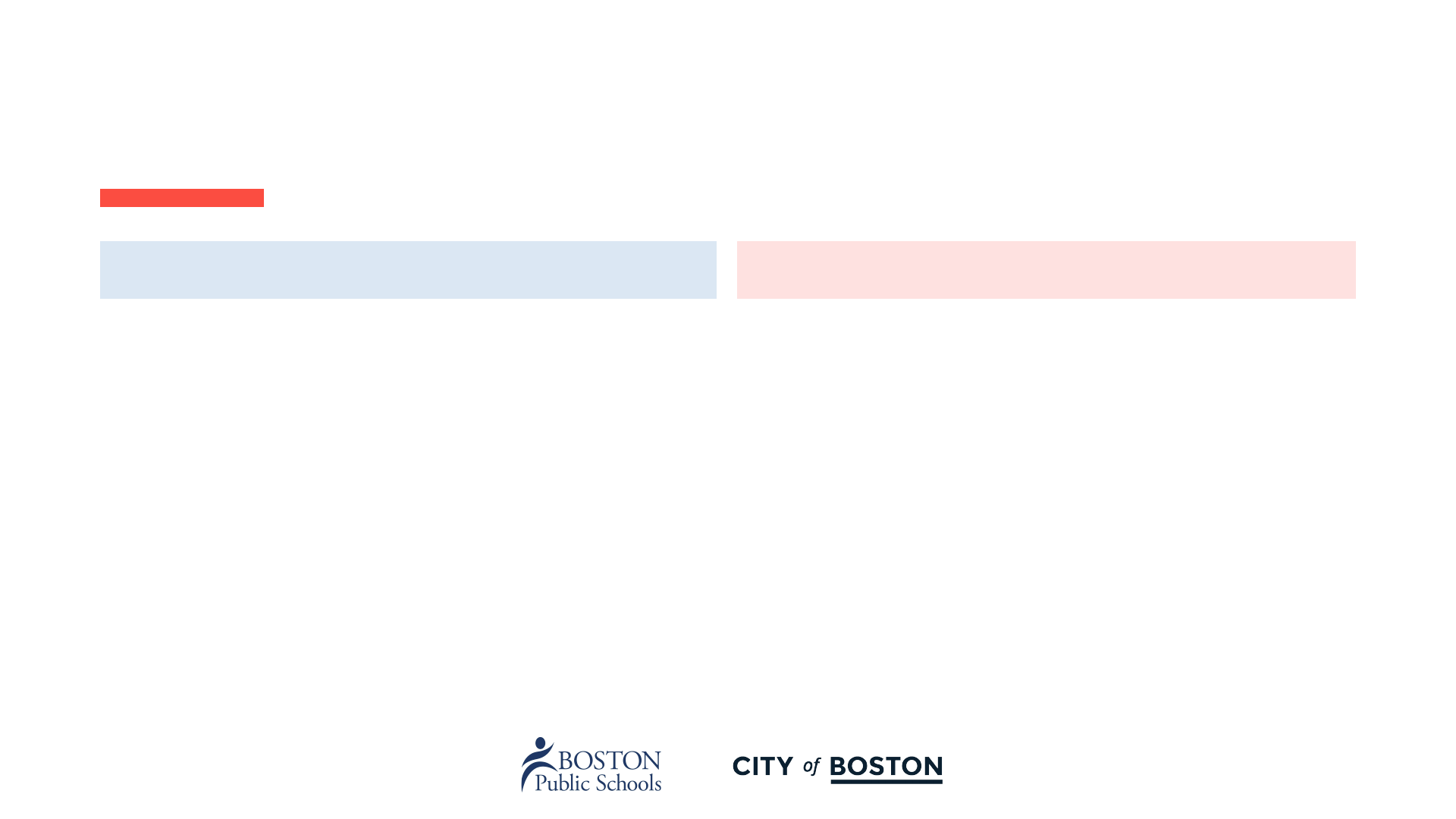
Expanding Bilingual Education,
SLIFE & Newcomer Programming
8
Bilingual Education
SLIFE & Newcomer Programming
In SY24-25:
• expansion of the Margarita Muniz’s existing
Dual Language program to 7th and 8th grade
(in SY25-26), allowing the Muñiz to grow by 190
seats.
In SY25-26 and beyond:
● Proposing new bilingual education programs
(transitional bilingual education or dual
language programs) at 8 elementary schools
and 1 secondary school
○ Languages: Spanish, Cabo Verdean Kriolu,
and Chinese, Neighborhoods: Chinatown,
Roxbury, Dorchester, Roslindale, South
End.
Since last summer, BPS has welcomed approximately
3,000 newcomer students, many of whom are served
in Students with Limited or Interrupted Formal
Education (SLIFE) and Newcomer programs.
In SY24-25:
● creation of new SLIFE program located at the
Margarita Muñiz Academy
● formalized Newcomer programs at East Boston
High School, Charlestown High School, and
Brighton High School
In SY25-26 and beyond:
● Proposing additional newcomer programs at 2
schools

Strengthening the Secondary
School Ecosystem
9
Early College
Early college pathways at
8 secondary schools,
partnered with 6 higher
education partners
Advanced
Coursework
26 secondary
schools offer either
AP or IB courses
CTE Programs
40 CTE programs
introducing career
pathways across 11
secondary schools
Innovation Pathways
4 secondary schools
offer Innovation
Pathways covering 6
industry areas
Work Planned for SY24-25 and beyond:
● Expand early college to additional schools and increase participation for MLs
● Increase AP offerings, including AP African American Studies at 4 additional schools (for a
total of 14), AP PreCalculus at 3 additional schools, and AP Research at an additional 2
schools in SY24-25.
● Create new professional development for AP teachers focused on increasing access for MLs
and SWD
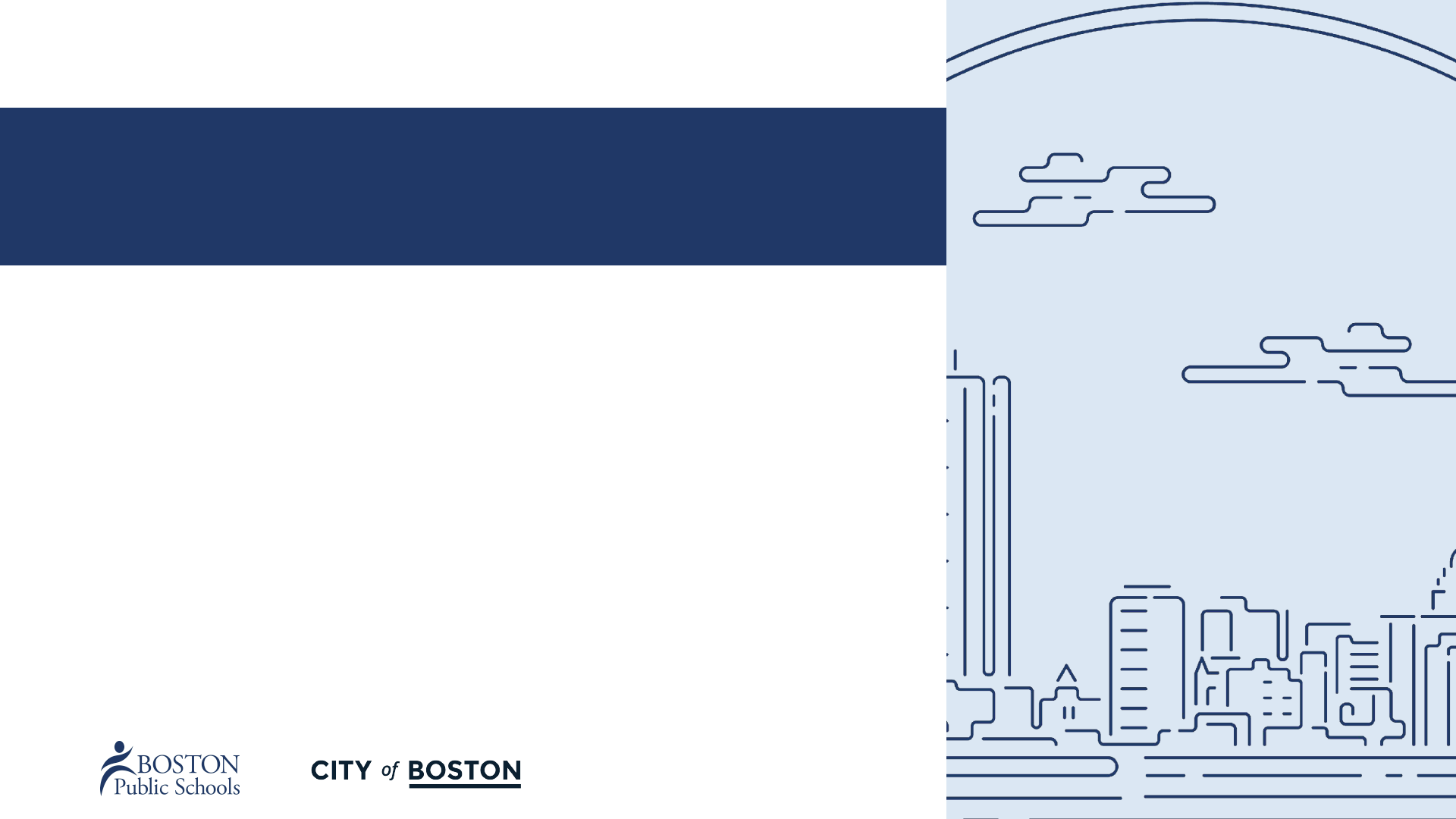
Structural Changes
• Strategic expansion of high quality seats
• Minimize student transitions and
provide strong school choices
• Create New Programming for
Multilingual Learners and Students with
Disabilities Ages 19-22
• Rethinking student assignment and
special education policies
10

Strategic Expansion
11
Expansions
in Progress
Three secondary schools are in the process of expanding using three
different strategies:
● Josiah Quincy Upper School: new build
● Margarita Muñiz Academy: grade reconfiguration
● Edward M. Kennedy Academy for Health Careers: relocation
Future
Expansions
For several schools in high demand, future growth is constrained by the
physical limitations of their current building. The district will begin work this
summer to identify buildings for two additional secondary schools:
● Boston International Newcomers Academy
● Boston Green Academy
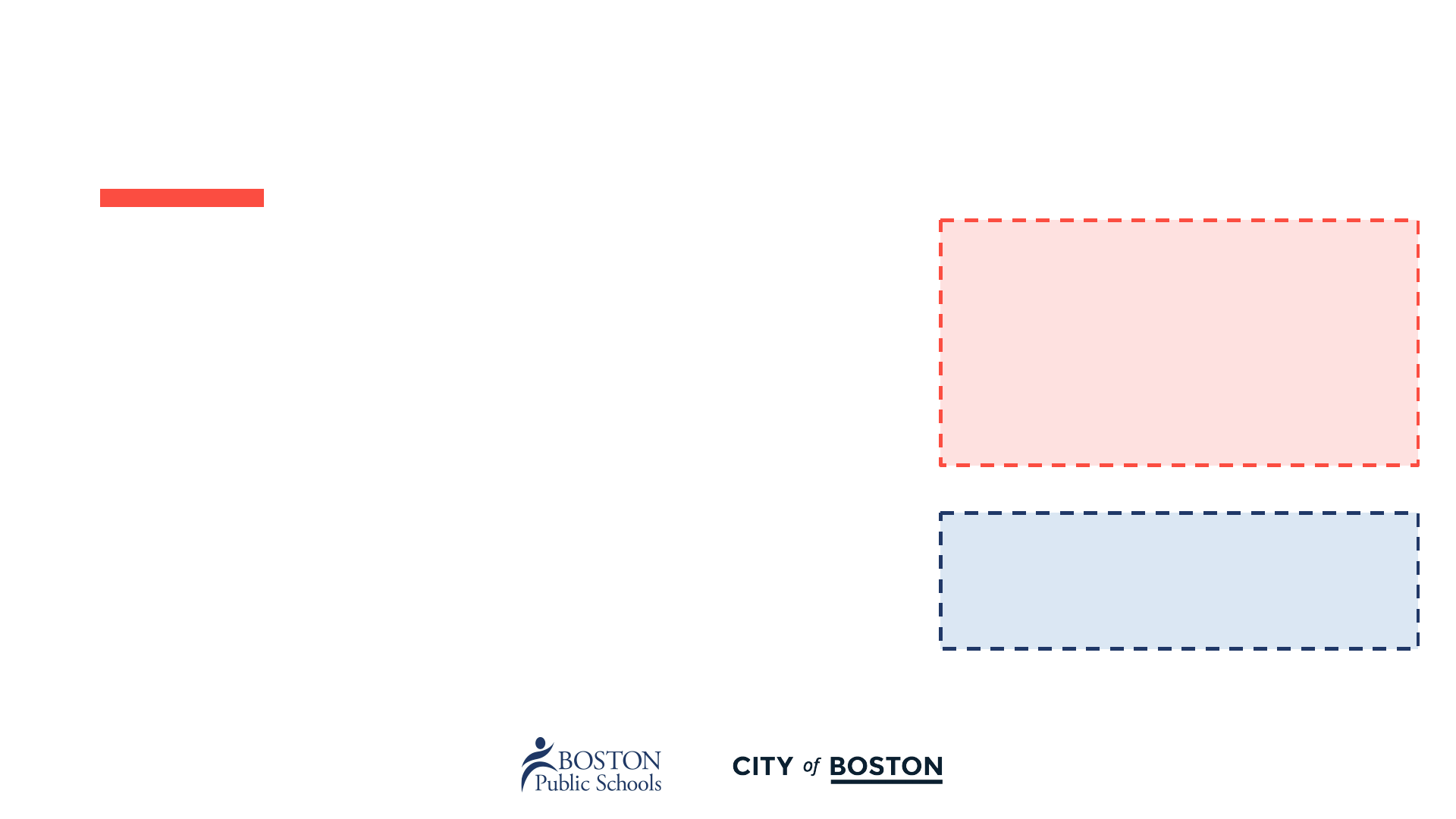
Minimize student transitions and
provide strong school choices
12
Effective SY24-25:
TechBoston Academy: 6-12 → 7-12
Boston Green Academy: 6-12 → 7-12
Mather Elementary: K-5 → K-6
Edison School: PK-8 → PK-6
Haley Pilot School*: PK-8 → PK-6
Margarita Muñiz Academy*: 9-12 → 7-12
UP Academy Holland: PK-5 → PK-6
Effective SY25-26:
Hernandez: PK-8 → PK-6
Gardner: PK-8 → PK-6
Hennigan: K-8 → PK-6
In 2019, the Boston School Committee adopted a grade
configuration strategy by which BPS is primarily a K-6/7-12 and
K-8/9-12 system to offer students an education experience with
fewer transitions.
● Research shows that multiple student transitions can
have a negative impact on student success and outcomes.
Each time a student moves from one school to another,
there is a risk of relationships and learning being disrupted.
By School Year 2024-25:
34 PK/K-5 schools will have added a 6th grade
4 PK/K-8 schools will have eliminated 7th and 8th grades
7 9-12 schools will have added 7th and 8th grades
4 6-8 schools will have closed, and the last standalone
middle school will close at the end of SY24-25
*The Haley Pilot School and Margarita Muñiz Academy will
complete their grade configuration changes over two
years. The reconfiguration will be complete in SY25-26.

New Reconfigurations
Reconfigure Hernandez K-8 to
PreK-6 School, effective SY25-26
13
Grade Configuration: K1-8
Neighborhood: Mission Hill/Jamaica Plain
Total Number of Students 406
Asian 0.0%
Black 3.4%
Latinx 79.3%
Multi-Race / Other 3.4%
White 13.8%
Students with Disabilities 12.8%
Multilingual Learners 51.5%
SY23-24 Enrollment
Grade Configuration: K0-8
Neighborhood: Allston
Reconfigure Gardner K-8 to
PreK-6 School, effective SY25-26
Total Number of Students 371
Asian 5.4%
Black 11.1%
Latinx 65.2%
Multi-Race / Other 4.6%
White 13.7%
Students with Disabilities 24.3%
Multilingual Learners 43.1%
SY23-24 Enrollment

Create New Programming
14
Post-secondary Transition Program
BATA East
Satellite campus of Boston Adult
Technical Academy (BATA), an
alternative high school for young adults
between the ages of 19-22.
● Target population: over-age
multilingual learner students
● Anticipated Capacity: 120 students
● Timeline: SY24-25
Program to help students develop skills
that will enable them to live as
independently as possible and develop
essential career skills that will help them
gain and maintain employment.
● Target population: students with
special needs, ages 18 to 22
● Anticipated Capacity: 100 students
● Timeline: SY25-26

Rethinking Student Assignment
and Special Education Policies
15
Structural barriers
remain around
ensuring all schools
are able to serve the
full diversity of
learners, particularly
in secondary schools.
Specialized Program schools include BINCA, Carter, Horace Mann, Mel King, and Muniz Academy
Percentage of All Students and of Multilingual Learners
(MLs) and Students with Disabilities (SWD)
served by School Type
8 of the 14 open
enrollment
secondary
schools are
transformation
schools
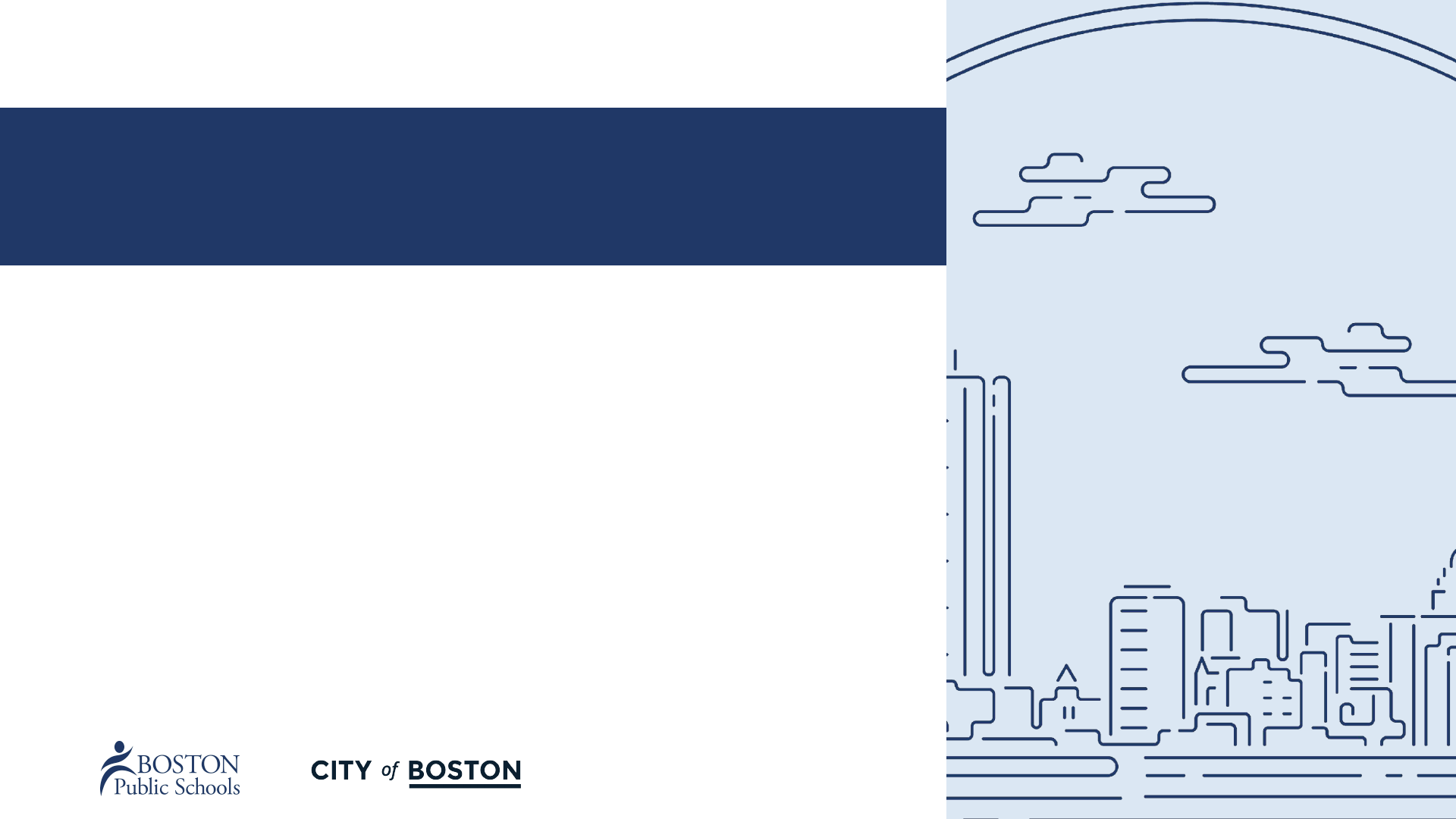
Investing in Our
Facilities
• New Builds and Renovations
• Closures, Consolidations and Mergers
• Better Utilizing Existing School
Buildings to Deliver HQSE
16
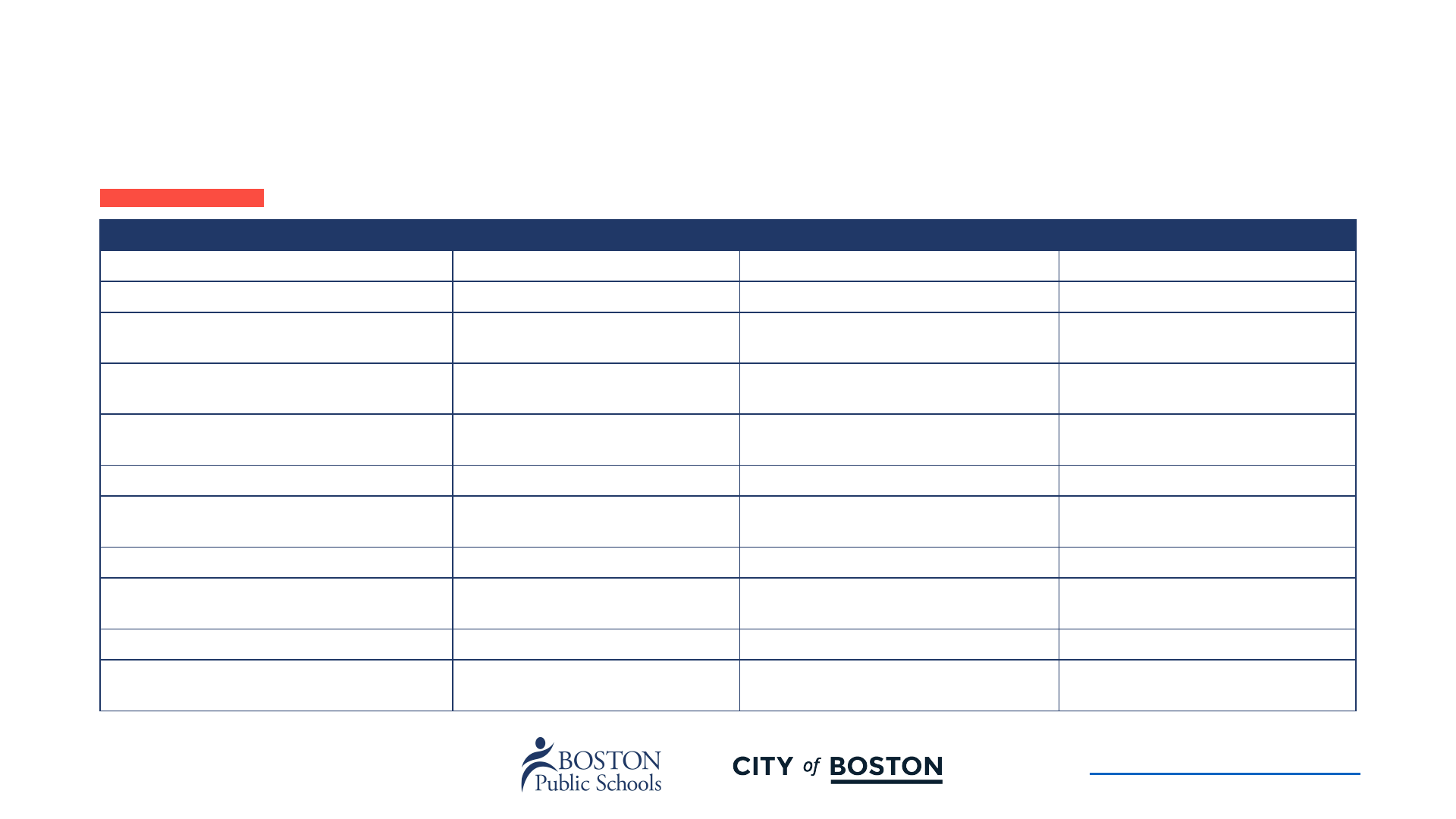
11 Major Capital Projects Underway
17
School Neighborhood Status Anticipated Completion Date
Carter School Roxbury Under Construction Winter 2025
EMK Academy for Health Careers TBD Analyzing site options Expansion begins by SY25-26
Horace Mann School for the Deaf and
Hard of Hearing (Edwards Building)
Charlestown Under Construction Summer 2024 (move in by
SY24-25)
Josiah Quincy Upper School Chinatown Under Construction Summer 2024 (move in by
SY24-25)
Philbrick-Sumner (Irving Building) Roslindale Under Construction Summer 2025 (move in by
SY25-26)
PJ Kennedy East Boston Under Construction Fall 2025
Madison Park Roxbury Procuring a designer for late spring
2024
TBD
Melvin H. King South End Academies South End Programming study underway TBD
Ruth Batson Academy Dorchester Application submitted to MSBA core
program (spring 2024)
TBD
Shaw-Taylor S. Dorchester/ Mattapan Planning Phase Estimated 2029
White Stadium Dorchester/Jamaica
Plain/Mattapan/Roxbury
In design TBD
FY24-28 Capital Budget
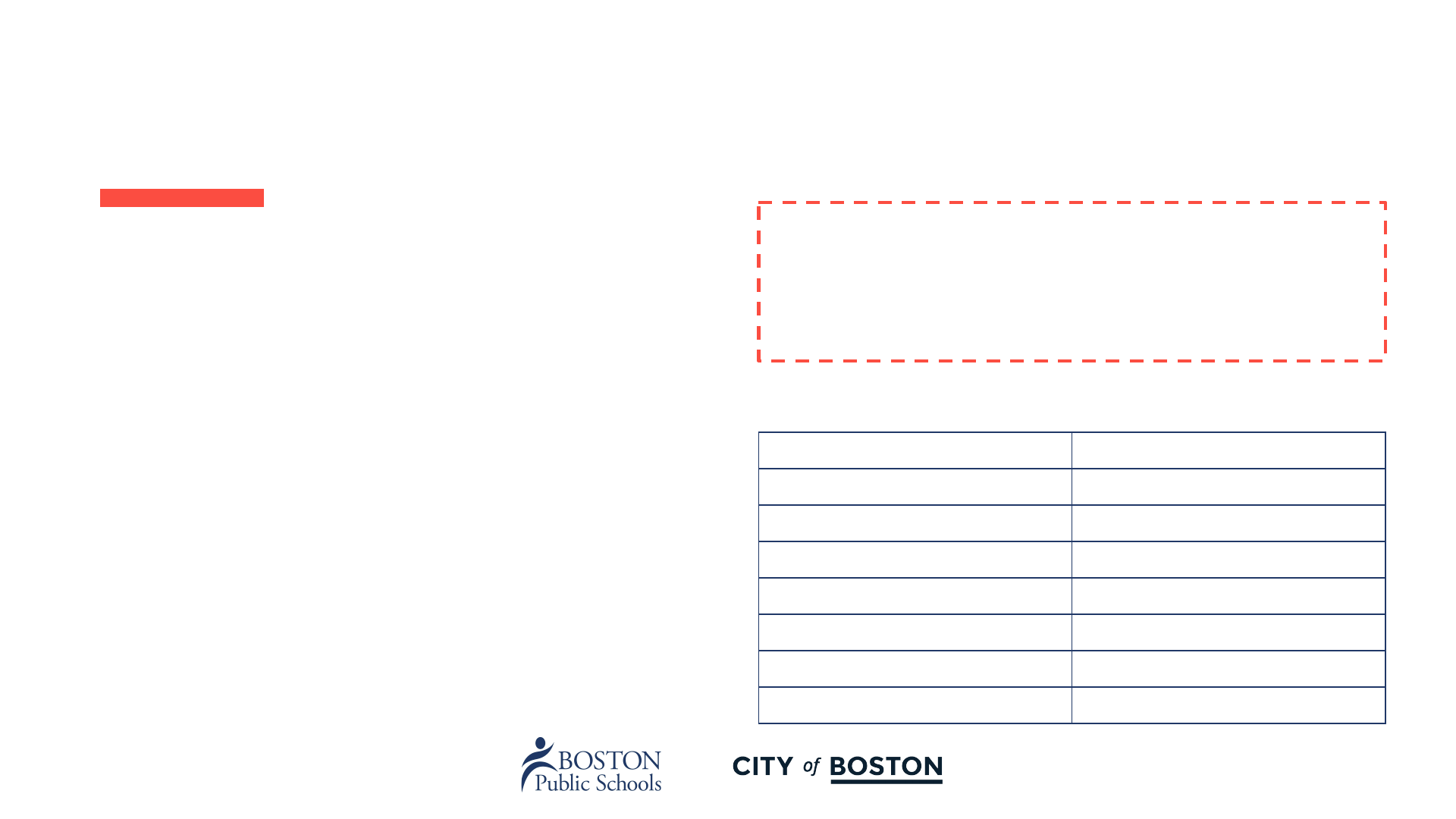
Grade Configuration: 6-8
Neighborhood: Dorchester
Building Experience Score: 4 out of 4
Building Provides Full Continuum of Services? Yes
5-Year Average Utilization Rate: 57%
Frederick Middle School
Proposal: Close Frederick
Middle School
18
❖ Last standalone middle school -
closure aligned to grade
configuration policy
❖ Families and school community
notified in January 2024 of
intention to close; school will not
enroll 6th grade in SY24-25
❖ Pending closure vote, district will
launch community process to
determine use of building for
another school community
Total Number of Students 337
Asian 4.5%
Black 32.9%
Latinx 58.5%
Multi-Race / Other 1.5%
White 2.7%
Students with Disabilities 30.3%
Multilingual Learners 49.6%
SY23-24 Enrollment
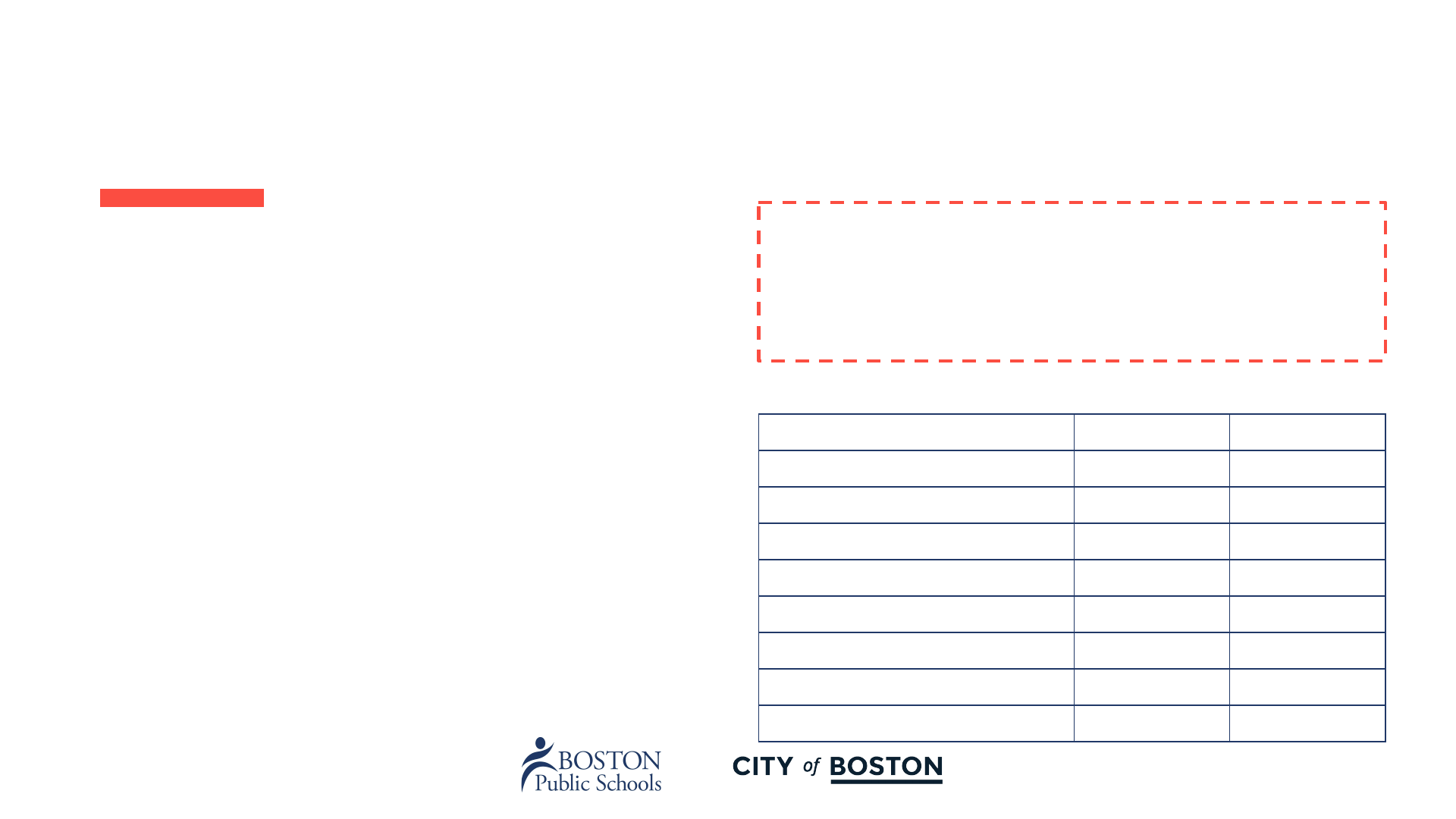
West Zone ELC & Hennigan K-8
Proposal: Close West Zone ELC
and consolidate into
reconfigured Hennigan PreK-6
19
❖ West Zone ELC and Hennigan K-8
are co-located
❖ Reduces student transitions from
West Zone ELC to another school
and allows for increased flexibility in
programming
❖ Commitment: 7:30am-2:20pm and
extended day opportunities until
4:30pm for K0-K2 students
❖ Will become Community Hub school
Grade Configuration: K0-1, K2-8
Neighborhood: Jamaica Plain/Roxbury
Building Experience Score: 2 out of 4
Building Provides Full Continuum of Services? Yes
5-Year Average Utilization Rate: 90%
West Zone Hennigan
Total Number of Students 114 503
Asian 8.8% 4.0%
Black 25.4% 24.9%
Latinx 50.9% 65.6%
Multi-Race / Other 3.5% 2.2%
White 11.4% 3.4%
Students with Disabilities 28.9% 23.1%
Multilingual Learners 52.6% 55.7%
SY23-24 Enrollment

Utilizing Existing School Buildings
to Deliver HQSE
20
Over the next year, we will work
to scope potential renovation
projects at a select number of
buildings.
The buildings listed here can
currently fit a model space
summary and have a low
utilization rate (70% and
lower)--or they are or will soon
be vacated. Some of these
buildings will likely require
significant investment to bring
building systems up-to-date,
while others may only need
more cosmetic upgrades.
Potential Buildings and their Current Usage for Further Evaluation
● Brighton High School building
● Burke High School building
● Cleveland building (currently used for CASH, STRIVE and
administrative offices)
● Endicott building (not currently in use)
● English High School building
● Excel High School building
● Frederick Middle School building
● Higginson-Lewis 3-8 School building
● Lincoln building (currently used as swing space for Quincy Upper)
● Lucy Stone building (currently leased to Boston charter school)
● Trotter Elementary School building
Data can be accessed www.boston.gov/gnd-bps

Looking Ahead
21

Building Data Framework
Building is not
meeting an
acceptable building
experience score
Building score is 2 or
less
Building cannot
provide a full
continuum of
services*
Failing Continuum of
Services score
*Continuum of services includes appropriate support spaces, classroom number and size, accessibility and location
of classrooms and support spaces
Building is
underutilized
5-year avg. utilization
rate of below 84%
How do we understand the current state of buildings in order to create change?
70 buildings meet this
criteria
75 buildings meet this
criteria
32 buildings meet this
criteria

Building Data Framework
Additional Measures to Consider for Decision Making
Individual School
Considerations
Merger Considerations Neighborhood and District
Considerations
● Low number of students for
whom the school is first,
second or third choice
● High percentage of students
who are administratively
assigned to a school.
● Fewer than 4 sections per
grade in secondary schools.
● High concentration of
specialized programs for
students with high needs.
● Low percentage of the student
body lives near the school.
● Proximity to another school or
to an empty building.
● One or both schools has a
utilization rate under 84%.
● One or both schools cannot
support a full continuum of
services, but together they can.
● One or both schools is a
single-strand school with only
one section per grade
● Is the school located in a
neighborhood where there are
more students than available
seats?
● Does the school serve students
in highly specialized programs
and there is no current
transition pathway for these
students to be served well in
other schools?

What’s Next for Impacted Communities
● Communities notified and initial community meetings held between May 9 and
May 15
● Continued engagement with impacted school communities:
○ Survey regarding transition support
○ In-person community meetings
○ Office hours for staff
24
Two proposals require School Committee vote, scheduled for June 17:
• Closure of Frederick, effective at end of SY24-25
• Closure of West Zone ELC, effective at end of SY24-25
Reconfigurations are continued implementation of existing 2019 School Committee policy
*Frederick community was notified in January 2024

Winter Spring
Annual cycle of evaluation and review
Summer Fall
Apply data
framework to
determine
proposals.
Engage with
community
around priorities
and supports.
Proposals for
Capital Projects,
including school
closures or
mergers, are
presented to
School
Committee.
Projects
approved by
School
Committee;
capital budget
approved by City
Council.
Transition plans
are finalized.
Begin
implementation
of transition plan,
including supporting
staff and families
transitioning to new
schools the following
school year
Annual Cycle for Capital Planning Decisions
25
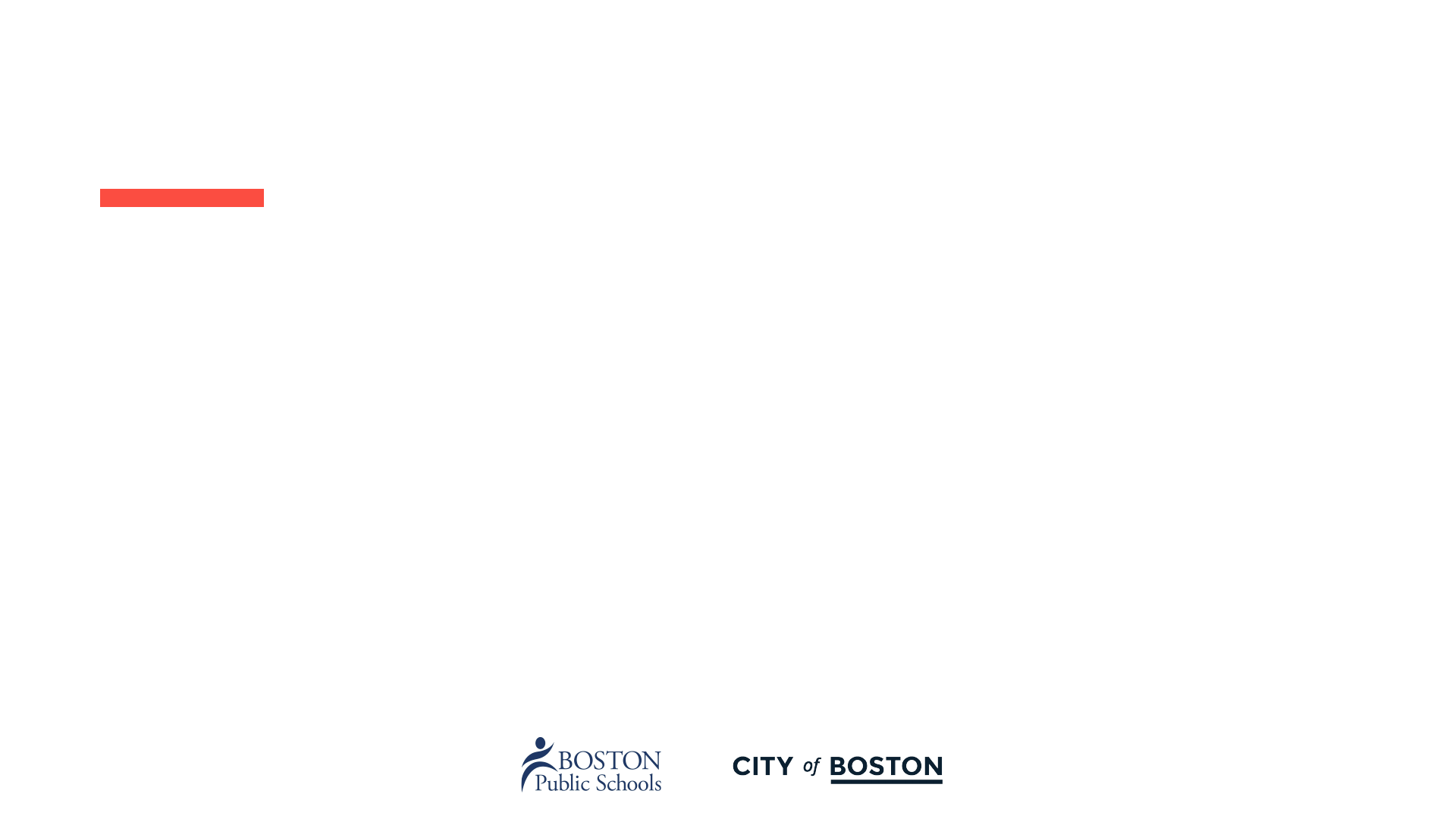
Realizing our vision
• May 8, 2024: Laying the Foundation: Historical Context
• May 22, 2024: Realizing our Vision: Proposals for SY 2025-26
• June 17, 2024: School Committee Vote on Proposals
• Summer & Fall 2024: Planning transitions with impacted school
communities

Appendix
27
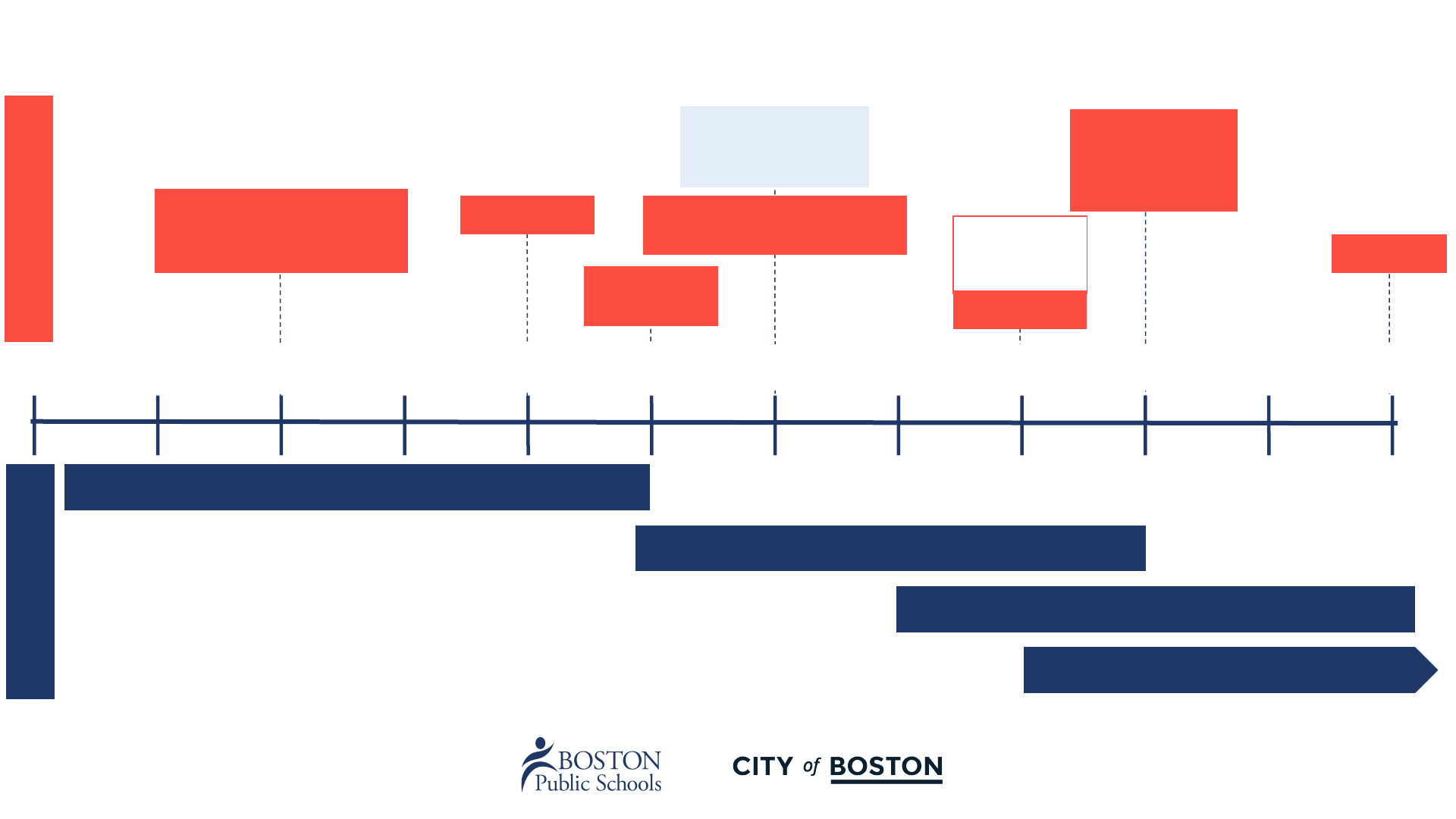
Dearborn STEM Academy
Boston Arts Academy
Josiah Quincy Upper
Carter
Rogers Middle
E Greenwood
Middle School Academy
Mattahunt
School Closures
New Builds
Dorchester
Academy
Grade Configuration
Policy Approved
BCLA and
McCormack
merge
Timilty
Irving
Jackson-Mann
Mission Hill
The Last Decade
West Roxbury Academy
Urban Science Academy
UP Boston
2013 2014 2015 2016 2017 2018 2019 2020 2021 2022 2023 2024
Edwards
Years reflect effective date. Timeline does not include mergers that
have been announced but are not yet implemented.
28
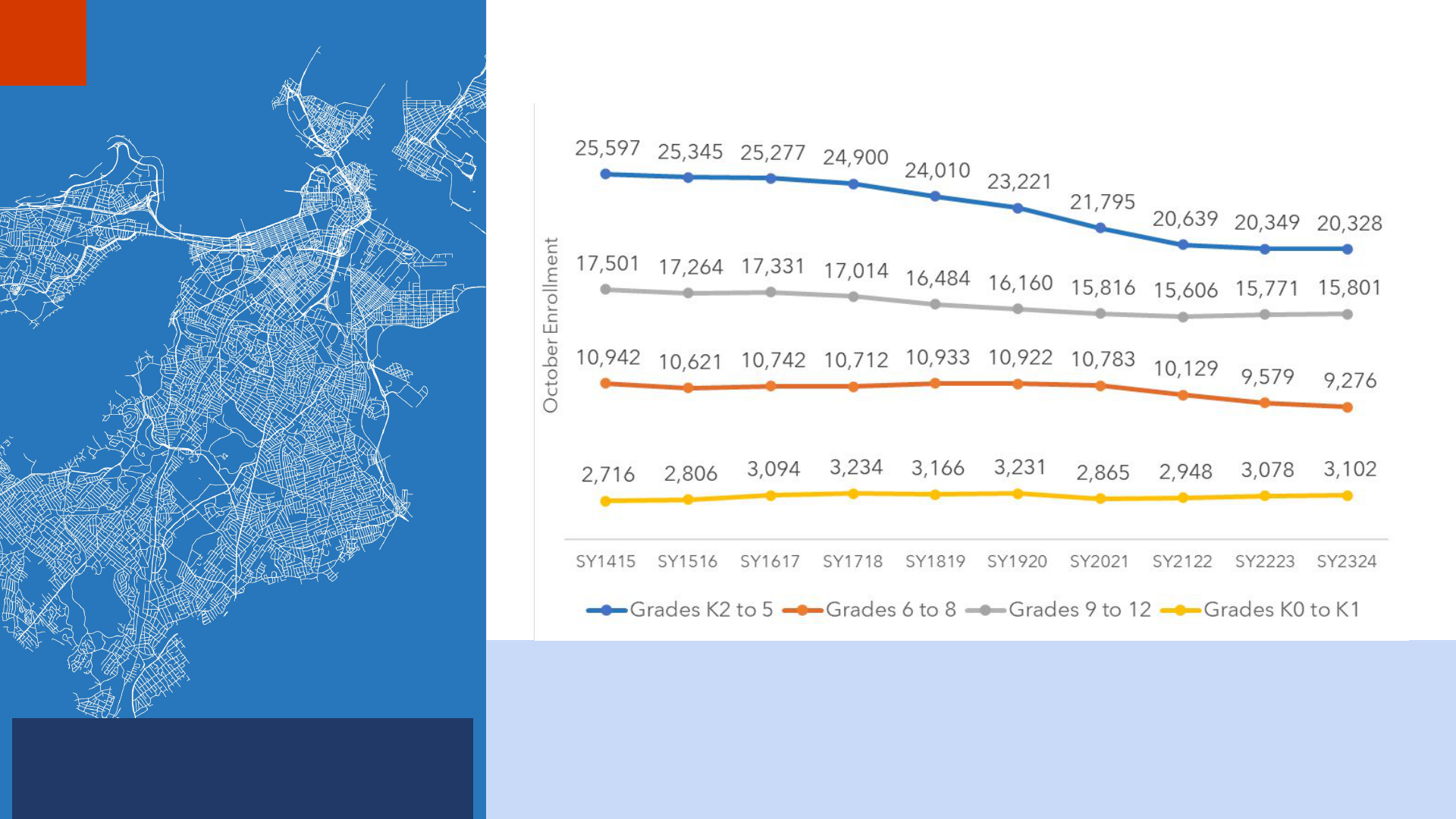
29
● Enrollment in grades K2 to 5 declined by 4,949 students (20%) in the
last 7 years, driven primarily by smaller cohorts entering the system.
● Enrollment in grades 6 to 8 decreased by 1,507 students (14%) in the
last 3 years as smaller elementary cohorts have aged up.
● Enrollment in grades 9-12 has been stable over the last 3 years.
BPS Enrollment
Trends
Enrollment has been stabilizing in Elementary Grades, smaller
cohorts are moving through middle school grades
29

● There is a consistent relationship between the number of Boston
resident births and the number of BPS K2 students 5 years later.
● Boston Resident Births declined by 15% between 2012 and 2021.
● The decline in resident births in 2019 and 2020 could lead to smaller
K2 cohorts over the next 2 school years.
BPS Enrollment
Trends
Elementary declines are driven by fewer resident births and
smaller K2 classes entering and moving through the system
30
